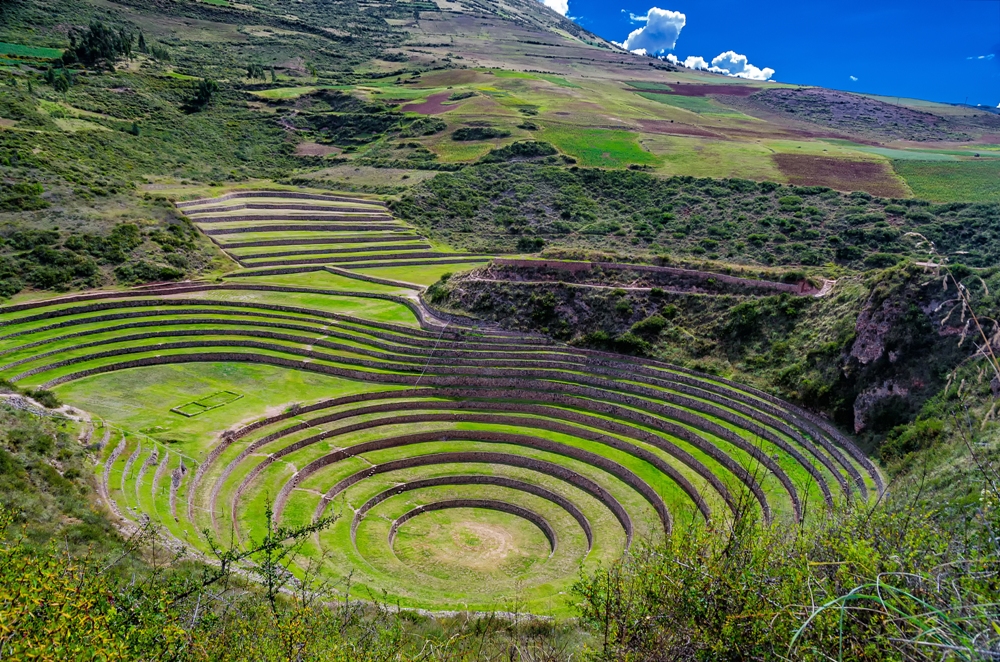 Located about 25 miles outside of Cusco, just a little out of the way, you’ll encounter the Incan ruins at Moray. Set remotely in the Sacred Valley, the Moray ruins are not mentioned in guidebooks very often, which means that you won’t encounter the number of visitors here that you may while visiting other sites in Peru, like Machu Picchu. This is an enchanting Incan site that you can enjoy in peace.
Located about 25 miles outside of Cusco, just a little out of the way, you’ll encounter the Incan ruins at Moray. Set remotely in the Sacred Valley, the Moray ruins are not mentioned in guidebooks very often, which means that you won’t encounter the number of visitors here that you may while visiting other sites in Peru, like Machu Picchu. This is an enchanting Incan site that you can enjoy in peace.
The Moray ruins contain deep, hollowed out ‘bowls’ reminiscent of Roman amphitheaters. Shaped like a circle, there are terraced stairs that lead up to the valley floor from within. A full understanding of what these ruins were is still not fully understood. The most widely held understanding is that this site was once a farming laboratory – a place in which they experimented with various plant species, planting times, irrigation techniques, etc. in an effort to ascertain the best possible means of agriculture.
The terraces are deemed to have been the research portion of the site. The depth of the circles, coupled with other aspects (such as their orientation to the wind patterns and the earth’s rotation) suggest they had a particular purpose. On the different levels of the terraces there were what were considered micro-climates, which afforded the Incans the ability to also test wild species of flora. By hybridizing and modifying, they were able to create plant strains that were fit for humans to eat. The Incans’ experimentation led to the creation of more than 2000 potato species in Peru.
Not coincidentally, it has been verified that there are incredible temperature changes from the lowest to the highest terraced areas. The Incan people were ahead of their time when it comes to understanding how to manipulate the sciences. They brought soils in to the Sacred Valley from various regions all across Peru, another indication that Moray was an experimental planting project. Fascinatingly, Moray never floods in spite of the heavy rainy seasons this region of Peru encounters, leading scholars to believe that there must be some type of channels underneath the site that allow for the water to be whisked away. No matter what, their experiments would not be harmed.
